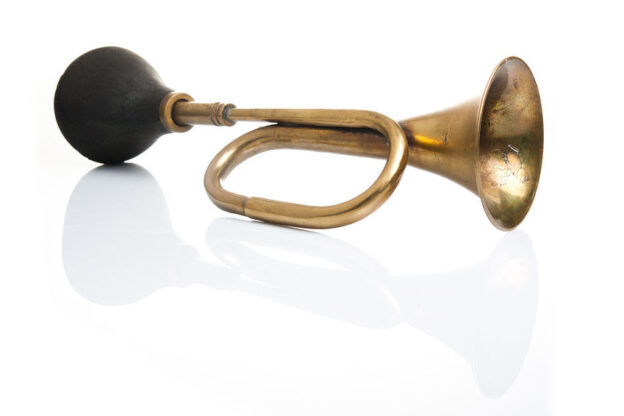Individuals utilize horns to caution other drivers of threats, or they utilize them essentially on the grounds that they’re irritated with drivers. The connection between vehicles and horns backpedals numerous years. In fact, it backpedals to the start of self-propelled vehicles.
These days the plan of car horns has reached the digital era with some car horns being simply powerful speakers controlled by electronic hardware. Uno Minda horns are the perfect example of modern horns.
In any case, alongside such cutting-edge designs, the antiquated diaphragm car horn still flourishes. The purpose behind this isn’t mind-boggling; it basically works and is a decent case of sticking with an innovation that does its job well. Let us talk about how car horns came to fruition since it didn’t set aside much opportunity to understand that a horn mounted on the vehicle was somewhat more proficient than a person strolling in front of the car blowing a horn. Yes, you heard me right, this was the concept of the horn back in those days.
Many of us underestimate our car horn, comforted by the fact that when need be, it’ll be there. What’s most disregarded is the sheer energy of the horn to permit drivers the capacity to speak with others. The dialect of the road is straightforward, yet assertive. We should investigate the focuses specified beneath:
History Of Horns:
It didn’t start in this nation. Car horns go back to the mid-1800s in Britain when steam-fueled carriages were simply beginning to be utilized. For the well-being of individuals and animals, a law that expressed “self-propelled vehicles on open streets must be preceded by a man by walking waving a warning and blowing a horn” was passed. The outcome was that this kind of car flagging endured for just ten years.
Horns are found on cars, motorcycles, auto-rickshaws, trucks, buses etc. However, the first “car horns” were not inside the cars. They were initially utilized by British pedestrians in order to alert the approaching vehicles. Gradually as and when driving-related technology advanced, they found a place inside the cars.
Horn Honking:
There are only two scenarios, either you cherish or you abhor the horns in your vehicles. A few drivers utilize honk in order to convey adequately and alarm other motorists, on the other hand, the rest utilize horns to vent their traffic dissatisfaction and sustain street seethe. As per the rules, you should just utilize your vehicle’s horn when it’s important to safeguard driving. A straightforward press of the horn is intended to notify other motorists out and about of any looming threats or obstructions to the driver’s security.
It’s alright to honk your horn when:
- A driver is speeding into your path on the highway
- A driver is going to bang into your car in a parking area
- A pedestrian is unconsciously strolling into an unsafe area
- A driver is going to hit somebody who’s accidentally broken the traffic signal
Conclusion:
Blasting your horns won’t magically make congested roads vanish, and the irritating sound of horns really makes traffic significantly more agonizing for drivers. In case you’re sitting in rush hour gridlock and can’t figure out how to take a backup course of action, pause for a minute to understand that there is almost nothing one can do in order to clear it and rather should try to sit back and relax or listen to some quiet music or strike a decent conversation with your fellow passenger. ‘Utilize horns adequately yet sparingly!’
If you have any queries regarding Uno Minda horns, please contact us.

